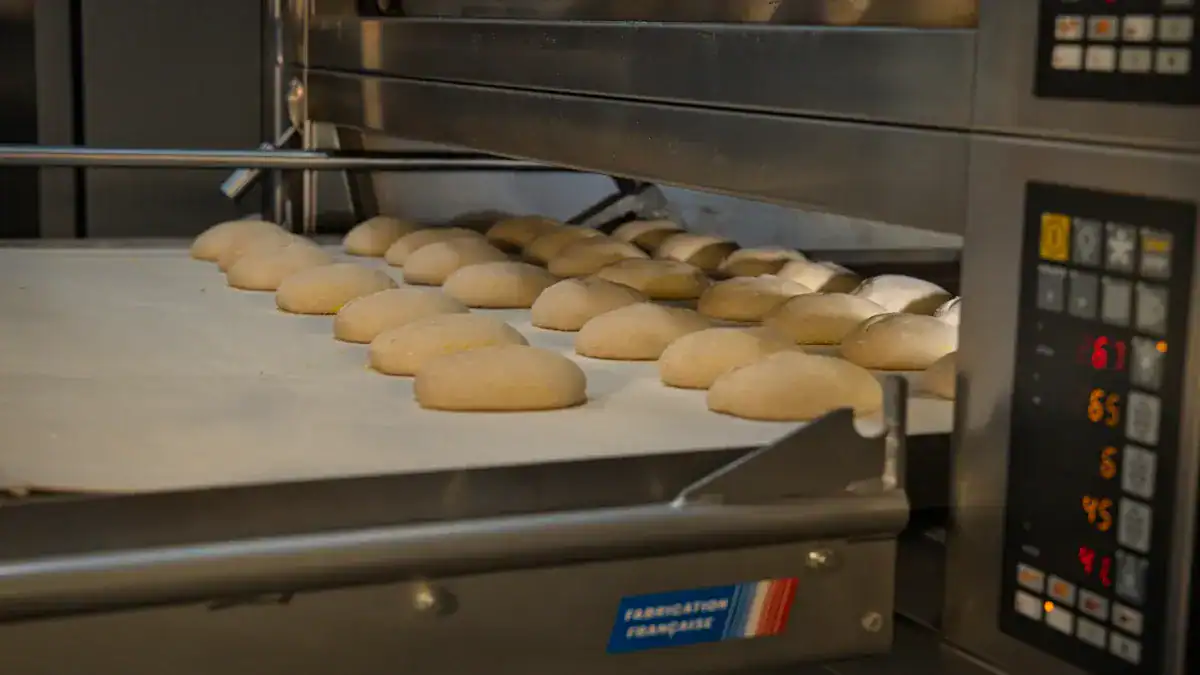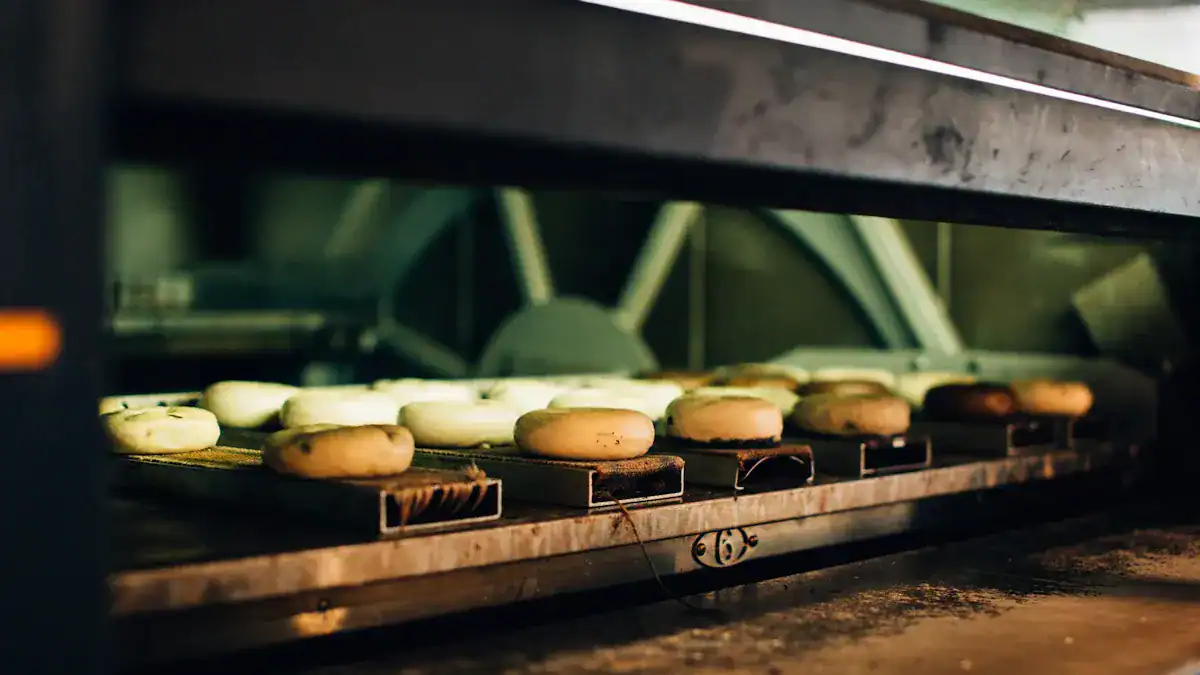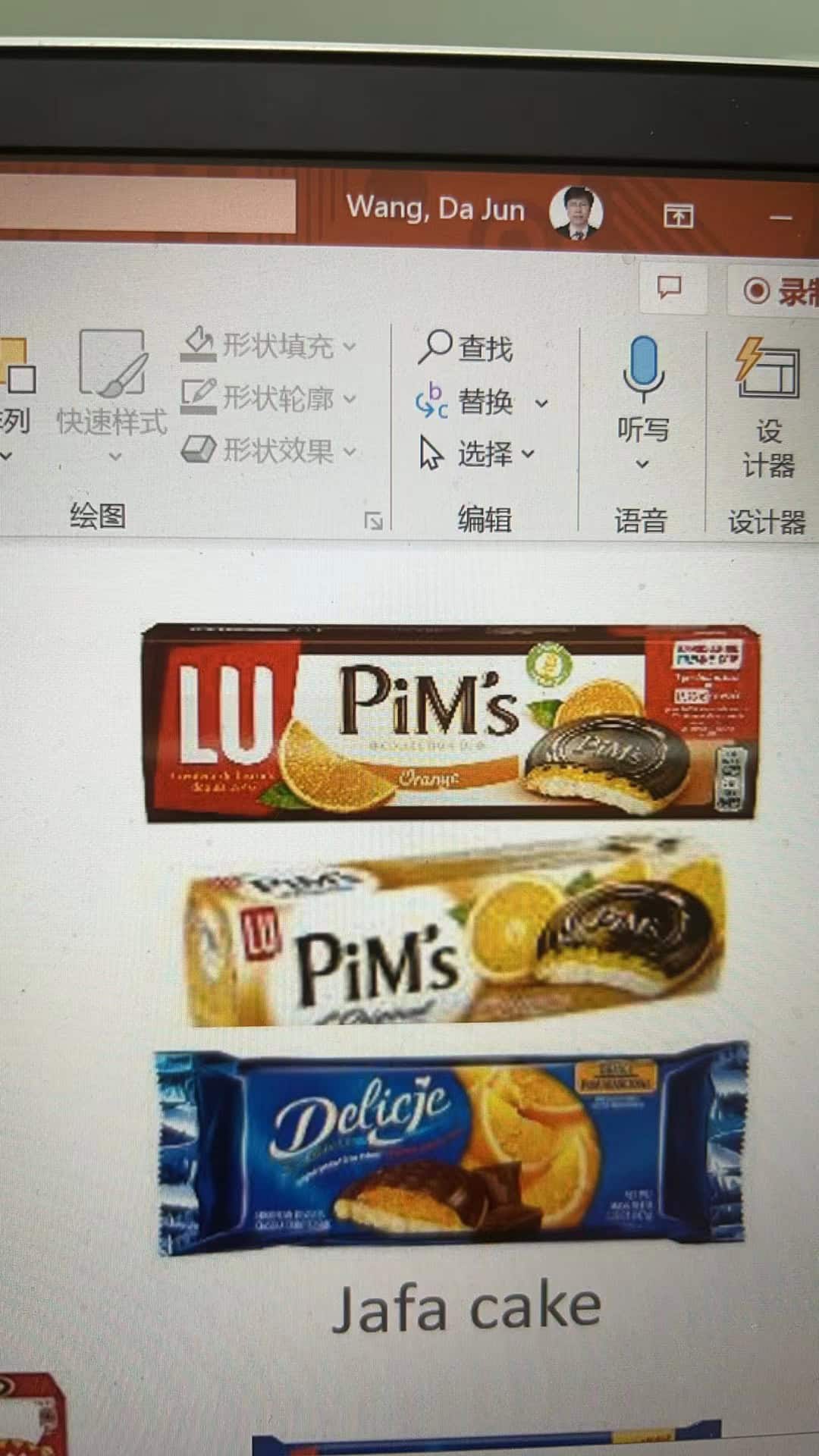
A cake production line biscuit machine simplifies baking by managing every step, from mixing ingredients to packaging finished goods.
Automated systems can produce up to 100,000 cupcakes or muffins per hour, improving speed and reducing manual labor.
Real-time oven management lowers gas use by 20%, while servo-driven motors and smart controls cut energy costs.
Hygienic equipment design saves water during cleaning, supporting sustainability in bakeries of all sizes.
Key Takeaways
Automation handles mixing, baking, and packaging, speeding up production and reducing manual work.
The machine ensures every biscuit or gâteau has the same size, shape, and texture for consistent quality.
Smart controls save energy and reduce waste, making baking more efficient and eco-friendly.
High output and fast processing help bakeries meet demand and save time during busy periods.
The equipment suits bakeries of all sizes, offering flexible options that improve safety and ease cleaning.
1. Automation

Automation stands at the core of the cake production line biscuit machine. This advanced equipment manages every stage of biscuit and cake production, from raw material preparation to final packaging. By automating these steps, bakeries can reduce manual labor, improve safety, and ensure reliable results.
Mixing & Forming
The cake production line biscuit machine automates the mixing and forming process. Operators load ingredients into the mixer, and the machine handles the rest. Programmable controls set the mixing speed and time, which ensures the dough reaches the right consistency. The forming unit shapes the dough with precise pressure, so each biscuit or cake looks the same. Modular designs allow the machine to handle both hard and soft biscuit types, giving bakeries flexibility to produce a wide range of products.
Baking & Cooling
Automated baking and cooling systems keep the process consistent and efficient. The machine controls oven temperature, baking time, and cooling speed. This level of control prevents overcooking and ensures even browning. The following table shows key benchmarks that highlight improvements in the baking and cooling stages:
Parameter | Benchmark / Range | Impact on Baking and Cooling Stage |
|---|---|---|
Baking Temperature | 180 – 220 °C | Ensures even browning and proper texture of biscuits |
Baking Time | 10 – 20 minutes | Controls thorough baking without overcooking |
Dough Pressure (Forming) | 2 – 5 bar | Shapes dough without structural deformation |
Vitesse de mélange | 60 – 100 RPM | Influences dough consistency and final biscuit texture |
Cooling Conveyor | Uniform temperature reduction | Prevents condensation, sogginess, and texture/flavor loss |
Automation Features | Programmable mixing, auto temp control, cooling conveyors | Enhances consistency, quality, and reduces human error |
Emballage
The packaging stage benefits greatly from automation. The cake production line biscuit machine integrates automatic filling, sealing, and labeling. This reduces the need for manual handling and increases output. Key improvements in packaging efficiency include:
Output increased by 50% after using automated filling machines.
Filling errors dropped by 75% with machine adoption.
Machines can package thousands of containers per hour.
Automation lowers labor costs by reducing manual work.
Integrated systems streamline production and reduce bottlenecks.
Tip: Automation not only speeds up production but also improves workplace safety by minimizing direct contact with hot surfaces and moving parts.
2. Consistency
Consistency stands as a key advantage of modern baking equipment. The cake production line biscuit machine delivers high accuracy and repeatable results, ensuring every batch meets strict quality standards. This section explores how the machine achieves uniform size, precise shapes, and controlled texture.
Uniform Size
The machine uses advanced control systems to monitor dough mixing, cutting, and baking. This technology keeps each biscuit within tight size and weight ranges.
Programmable Logic Controllers (PLC) help maintain the following specifications:
Specification / Range
Biscuit Thickness
5mm to 10mm
Biscuit Weight
10g to 50g
Color
Golden brown
Texture
Crispy and uniform
Wire-cut and rotary molder machines produce biscuits with consistent thickness and shape. Operators can rely on these machines to deliver the same results, batch after batch.
Consistent size and weight help bakeries meet packaging requirements and customer expectations.
Shape Precision
The machine features a variety of pattern molds, allowing production of multiple cookie shapes.
Operators can switch molds easily, so one machine can fulfill all shape requirements.
Rotary cutting lines use single head rotary cutters for precise, customizable dough shapes.
Adjustable rollers and speed controls ensure each biscuit or cake maintains its intended form.
Shape precision supports brand identity and product appeal, especially for specialty or seasonal items.
Texture Control
The cake production line biscuit machine uses advanced baking and cooling technologies to control texture.
Uniform heat distribution and controlled baking times keep texture consistent across all products.
Sensory evaluation scores show that cakes and biscuits from improved ovens match commercial standards:
Produit
Attribute
Score (Mean ± SD)
Cake
Color
8.33 ± 1.07 / 8.42 ± 0.67
Cake
Flavor
8.08 ± 0.90 / 8.08 ± 0.67
Cake
Taste
7.67 ± 1.44 / 8.17 ± 0.58
Cake
Texture
8.08 ± 1.16 / 7.33 ± 0.78
Cake
Overall acceptability
7.75 ± 1.22 / 8.08 ± 0.51
Biscuit
Color
8.7 ± 0.48 / 7.8 ± 0.42
Biscuit
Flavor
8.5 ± 0.71 / 7.6 ± 0.97
Biscuit
Taste
8.7 ± 0.48 / 7.6 ± 0.97
Biscuit
Texture
8.5 ± 0.52 / 6.0 ± 1.63
Biscuit
Overall acceptability
8.5 ± 0.71 / 7.1 ± 0.73
The machine keeps temperature variability within ±3°C on the surface and ±2°C at the center, supporting uniform cooling and texture.
Reliable texture control means every bite tastes just right, no matter the batch or variety.
3. Cake Production Line Biscuit Machine Efficiency

High Output
le cake production line biscuit machine delivers impressive production speed. Bakeries can meet high demand without sacrificing quality. Smart sensors and real-time monitoring systems help maintain consistent dough quality and baking conditions. These features boost efficiency and output.
Production efficiency can increase by up to 25% with smart sensors and monitoring.
AI technologies in biscuit manufacturing can raise productivity by 20% to 30%.
Automation optimizes workflows and predicts maintenance needs.
These improvements allow bakeries to produce more biscuits and cakes in less time. High output supports both daily operations and seasonal peaks.
Time Saving
Automatic feeding systems, rotary moulders, and packaging machines work together to save time. Each part of the process connects smoothly. Operators spend less time on manual tasks. The machine handles mixing, forming, baking, cooling, and packaging.
Fast changeovers and digital recipe management reduce human error and speed up production.
Rockwell Automation’s solutions, such as FactoryTalk® Batch, help bakeries switch recipes quickly and keep product quality high. Performance analytics tools also help identify the best production settings, which cuts waste and saves even more time.
Large Volume Handling
The cake production line biscuit machine scales to fit bakeries of any size. Small artisan shops and large industrial plants both benefit from tailored solutions. The table below shows how different bakeries use equipment to handle large volumes:
Bakery Size / Segment | Equipment / Solution | Caractéristiques principales | Cost-Effectiveness & Scalability Highlights |
|---|---|---|---|
Small bakeries / Artisan | Hobart HSL130 Spiral Mixer | 130-pound capacity, gentle mixing | Consistent quality for small batches, lower capital investment |
Industrial / Large-scale | Andrew Mafu Machinery Fully Automated Bread Line | Up to 10,000 loaves per hour, customizable | High throughput, automation improves efficiency, higher investment |
Quick Service Industry | Unox SPEED Compact ECO Oven | Compact, rapid cooking, optimized space | Excellent ROI, cost-effective for smaller or quick service bakeries |
Hospitality / Automated Retail | LBX Food Robotics Bake Xpress Kiosks | Robotic kiosks, 24/7 operation | Automation scalability, reduced labor costs, continuous operation |
Automation, AI, and IoT integration help bakeries of all sizes reduce waste and improve product quality. While high initial investment can be a challenge, scalable solutions now make it easier for bakeries to grow and modernize.
Automation, consistency, and efficiency drive modern bakeries forward.
Automated systems increase productivity by up to 40% and save up to 30% of production time.
Mechanized processes reduce labor needs and improve product quality.
Bakeries can choose standard or custom machines to match their needs.
Upgrading equipment helps teams work smarter and deliver better results. Consider how new technology can make baking easier and more productive.
FAQ
What types of products can a cake production line biscuit machine make?
The machine produces cakes, cookies, and biscuits. Operators can select different molds and settings for various shapes and sizes.
Many bakeries use it for both soft and hard biscuit varieties.
How does the machine improve food safety?
Automated systems reduce human contact with ingredients and finished products.
Fewer touchpoints lower contamination risks.
Enclosed designs keep the baking environment clean.
Is the machine easy to clean and maintain?
Yes. Most machines feature stainless steel surfaces and removable parts.
Quick-release components allow for fast cleaning.
Routine maintenance checks help extend equipment life.
Can small bakeries use this equipment?
Small bakeries benefit from compact models.
Feature | Benefit |
|---|---|
Conception modulaire | Fits limited space |
Opération facile | Reduces training |
What support do manufacturers provide after purchase?
Manufacturers offer installation, training, and technical support.
Many companies provide spare parts and remote troubleshooting to keep production running smoothly.




